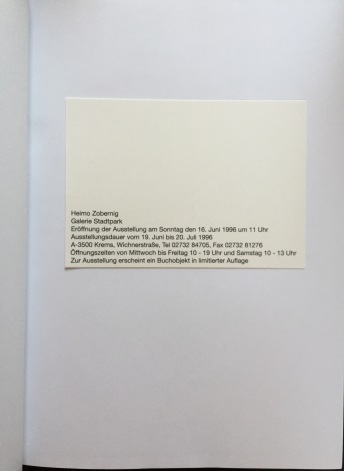Dieter Roth who was born in 1930 and passed away in 1998, was- among lots of others – very well known for his artist books (–> see Wikipedia). The Dieter Roth Foundation mentions on its website “Beginning in the 1950s, Dieter Roth took the artist’s book in new directions. Starting with op-art and visual poetry books, he then experimented with all aspects of offset printing and by the 1990s was producing “copy books,” using photocopiers…”
This topic of artist books is also touched by an interesting article written by Andrew M. Goldstein, 2013 called “MoMA Curator Sarah Suzuki on HOW Dieter Roth Invented the Artist´s Book” (http://www.artspace.com/magazine/interviews_features/moma_curator_sarah_suzuki_dieter_roth_interview) where it is mentioned “…that it’s hard to believe that the medium is less than 50 years old, and more or less indebted to a single artist: Dieter Roth.”
Looking at those “samples(?)” of descriptions of D. Roth´s copy books, I am basically starting to think about, what meaning/history/sense might be behind those words. So I am now looking for the contents of those copy books … the story might be continued.
Before I forget it …The technique of photocopying by the way is something other contemporary artists use as well (even I do not know if. Mr Zobernig was influenced by D. Roth) : A nice example at least would be Heimo Zobering´s book project “Galerie Stadtpark” from 1996 where Zobernig creates copies of the pages of the guest book which was filled by the spectators at the gallery opening. One page in each copied edition is always one original page of the original guestbook.




